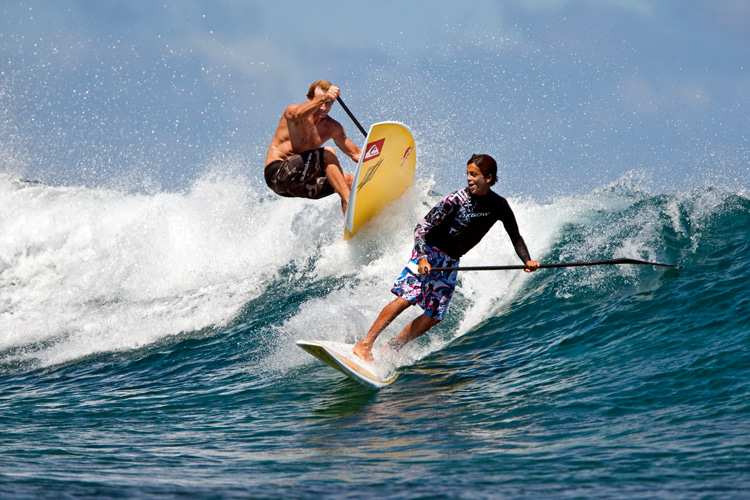Stand-up paddleboarding is not always welcome in the line-up. There are many reasons behind this suspicious attitude towards SUP fans and their gear.
Stand-up paddleboards are weapons, especially rigid/hard models.
If shortboards can seriously hurt someone, a ten-foot SUP ship may quickly kill if it hits someone in the head.
This is one of the reasons inflatable SUPs have been gaining supporters.
SUP enthusiasts are compelled to respect the basic rules of surf etiquette, but they should also know that special guidelines apply to their sport.
In several nations and states, stand-up paddleboards are considered watercraft. This means that riders must follow rules that don't usually apply to classic surfers.
For example, the use of personal flotation devices (PFD) by children under 12 years old is compulsory on a SUP.
The U.S. Coast Guard classifies stand-up paddleboards as vessels because they operate "beyond the narrow confines of a surfing, swimming, or bathing area."
As a result, they respect boating rules under the definition of recreational watercraft. Traditional paddleboards that don't use a paddle are not considered vessels.
However, these rules are not valid in the surf zone.
Problems begin to emerge when SUP riders start paddling after every wave, as "classic" shortboard surfers are especially sensitive to stand-up paddleboarders who drop in or adopt a snaking attitude.
Take turns. Show other fellow wave riders you're sharing the stoke. They'll appreciate that.
Everybody knows SUPs have a paddling power advantage, so take that into consideration and act accordingly.
Finally, if possible, avoid taking your stand-up paddleboard to super crowded line-ups. It won't be fun for you, and it could be dangerous to others.
Stand-Up Paddleboarding (SUP) Etiquette | General Common Sense Guidelines in the Line-Up
- Don't snake surfers;
- Take turns and share waves. Don't be a wave hog;
- When in doubt, give surfers right-of-way;
- Don't paddle through the line-up;
- When paddling out, take the whitewater hit instead of ruining a surfer's wave;
- Avoid taking your SUP to heavily crowded line-ups;
- Always wear a leash;
- Hold on to your paddleboard and paddle all the time;
